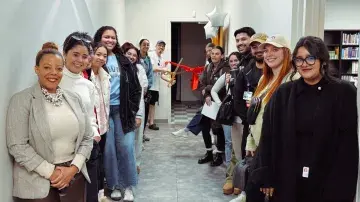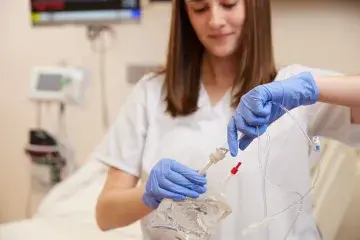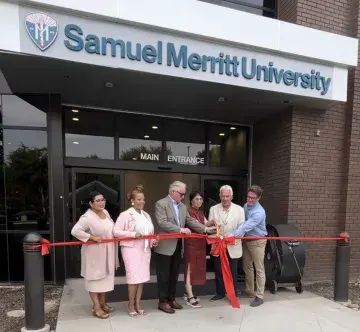Building Excellence in Simulation Education: Jeanette Wong’s Journey at SMU
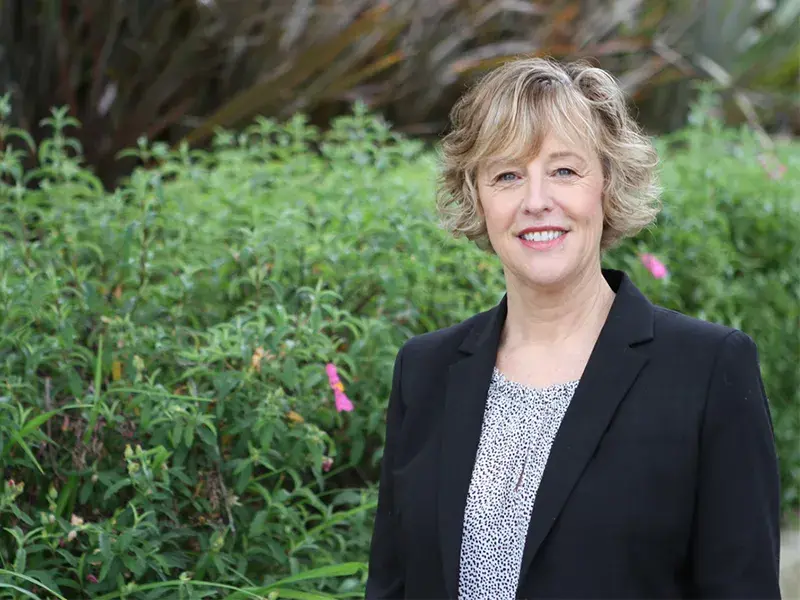
Jeanette Wong, a cornerstone at Samuel Merritt University’s (SMU) Health Sciences Simulation Center (HSSC), officially retired in November but the impact of her years of service continues to be felt throughout the University and beyond.
“This has been a highlight of my career, to work at Samuel Merritt [University], to work at the Simulation Center, and to work with the people that I’ve worked with – faculty, staff, my team, the students,” said Wong, who will work as an adjunct instructor at SMU in her retirement. “This was such creative and inspiring work.”
A nurse by training, Wong joined SMU in 2005 to help launch the ABSN program. With that program up and running, she then joined Simulation Center founder Celeste Villanueva about two years later as the center’s operations manager. Wong says she didn’t know much about simulation at the time, but was intrigued by its possibilities.

Together with Villanueva and a team of simulation professionals, Wong helped establish SMU’s reputation of excellence in healthcare simulation. In 2016, she was promoted to executive director of the Simulation Center, overseeing the addition of simulation centers to the Sacramento and San Mateo campuses and, eventually, to the Fresno campus.
“This initiative was a pivotal step in expanding SMU’s presence in the Central Valley, addressing the critical need for healthcare professionals who will not only graduate locally but also remain in the region to serve its communities,” said Provost Brian Clocksin. “Jeanette exemplified interdisciplinary excellence and fostered incredible teamwork. Her contributions leave a lasting legacy.”
In addition to the Simulation Center expansions, Wong counts among her career accomplishments the integration of simulation across all disciplines at SMU. All programs now have simulation integrated into their curriculum and there’s a clamoring for even more, she said. That simulation is seen as a valuable part of the curriculum by both students and faculty is a tremendous reward, Wong said.
“It’s amazing to see students have those ‘aha’ moments and see the lights go on, it’s so rewarding,” Wong said. “And when you see the impact it has on practicing clinicians who can take the lessons learned back to practice and have an impact on patient outcomes, that’s just as rewarding.”
Wong points to two significant accomplishments she is proud to have been a part of. In 2009, Wong introduced standardized patients (SPs) into the simulations. SPs are actors from the community who are trained to behave as real patients in order to enhance simulations by providing learners with a more realistic encounter. It also provides students with opportunities to practice their communication and receive feedback from the patients. Today the center’s simulations are primarily SP-based, with more than 100 SPs in the pool.
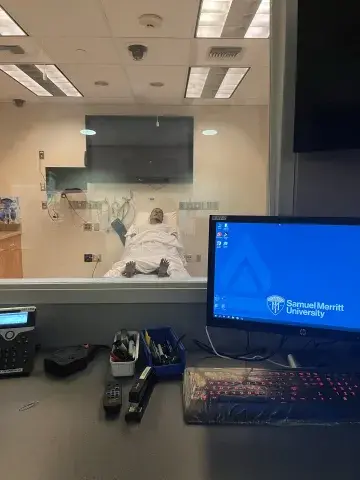
Additionally, in 2017, the Simulation Center became one of the first 100 simulation programs throughout the world to be accredited by the Society for Simulation in Healthcare (SSiH). This significant accomplishment is a reflection of the Simulation Center’s dedicated team and their commitment to excellence in simulation-based education.
At SMU, colleagues praise Wong for her work in demonstrating the importance of simulation throughout healthcare education. Sharon Gorman, chair of the physical therapy department, said Wong introduced her to the world of simulation for use with physical therapy students, helping her understand the pros and cons of using simulation to augment student learning and develop her own first scenarios.
Thanks to Wong’s guidance and mentoring, Gorman said she’s grown in her use of simulation. She was appointed to a national physical therapy task force looking at simulation in PT education that led to articles about simulation for a PT journal, the development of the first rehabilitation-specific training course for simulation, and more.
“None of this would have been possible without the encouragement, mentorship, and partnership of Jeanette,” Gorman said.
Alvin McLean, SMU regent board member, dean of the JFK School of Psychology & Social Sciences at National University and a longtime simulation advocate and partner, described Wong as the consummate professional who always ensured decisions aligned with SMU’s mission.
“She was a wonderful educator and colleague in demonstrating the value of interprofessional education and practice, both in showing students how this approach enriches their educational and professional development, as well as demonstrating how this approach is what is best for the most efficacious and cost effective patient care,” McLean said.
That the Simulation Center has grown so dramatically and had such an influence, Wong said, is a testament not just to her work but to that of everyone at the University. Simulation, she said, is a field with wide-open possibilities and ever-changing scenarios to prepare SMU students to be the best of the best.
“Not one day was the same,” Wong said. “There was never a repeat. Even if we were repeating a simulation, we had different learners who come up with different questions and different ways of solving the puzzle. Ultimately, it is all about training our students to be the best prepared and successful graduates in their field.”
